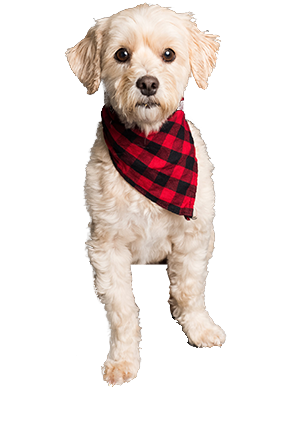Ever tried to shove your hand in the mouth of an angry child to brush their teeth? Well, the process is even less fun when it comes to dogs. Their teeth are sharp, after all!
But teeth cleaning is crucial to your dog\’s health. The more you maintain your dog’s teeth the less you’ll need to visit groomers or veterinarians down the road. It’s an ongoing business for dog owners, but if you do it right then it can actually be an enjoyable experience.
Signs of poor oral health:
- Bad breath
- Drooling
- Pawing at the mouth
- Trouble eating
If you’re noticing any of these symptoms, bring your dog to a groomer right away. Otherwise, here’s 3 steps to take to avoid dental issues.
1. Start ‘Em Young
Young children are constantly putting things in their mouths in order to explore. Dogs are no different. If you start young then they’ll be more comfortable with something other than food in their mouth.
Gently playing with your dog’s mouth teaches them to trust that process. You can make it fun too – use peanut butter or another snack to help them associate contact with reward. Food rewards are a powerful way to build trust with your dog.
2. Slowly Introduce a Toothbrush
Once your dog gets comfortable with contact in the mouth, the next step is to get comfortable with the toothbrush. It’s a foreign object that can’t be eaten, so it’s tough to predict your pet’s reaction. Try using a treat like beef to associate the toothbrush with something positive.
Keeping the toothbrush close, use your fingers to gently massage the gums and the teeth in the front and back of the mouth. Again, this associates positive energy with the presence of the toothbrush so you can slowly start using the toothbrush full time.
Just like humans, bacteria is hard on your system. Your mouth and your dog’s mouth are breeding grounds for unwanted guests. Brushing your dog’s teeth regularly will help their oral health and ultimately help them live longer and happier lives.
3. Raw Food
The problem with a lot of commercial dog food you find on the shelf is that dogs only use the back teeth, the molars, to chew. The food is tough so its pushed to the back of the mouth. The result? The front canines and incisors aren’t used and therefore aren’t cleaned naturally through the eating process.
Raw food, on the other hand, utilizes all 42 teeth. It has tissue that slides in between teeth and acts like dental floss. Bones are handy as well; dogs will hold a bone with their paws and go to town using as many teeth as possible.
Happy Mouth, Happy Dog
There’s nothing worse than walking around worrying about your mouth. Well, dogs aren’t self-conscious enough to know when their breath is terrible, let alone when their mouth needs some serious attention.
The best way to combat poor oral health is to get ahead of the problems before they start by regularly brushing your dog’s teeth or by simply visiting a groomer or pet-health educator.
Like us! (Sorry for the shameless self-promotion, just couldn’t be avoided any longer!)
photo credit: Greyhound Run 2011.01.01 via photopin (license)

